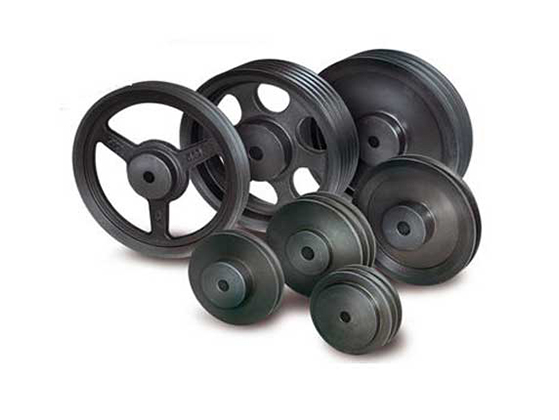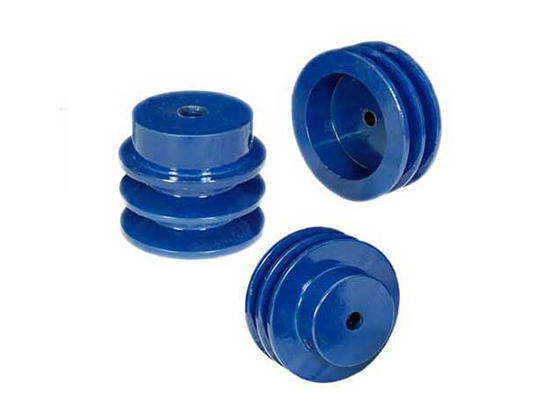V Belt Pulleys Manufacturer
V belts solved the slippage and alignment problem. It is now the standard power transmission belt. They offer the best combination of traction, load of the bearings, movement speed and service life. They are generally endless with a trapezoidal cross-section (hence the name "V"). The belt's "V" shape tracks in a matching groove in the pulley (or sheave), preventing the belt from slipping off.
Product Description :
Because of their small center distances and high reduction ratios, V belts trump flat belts. The best possible center distance is greater than the diameter of the largest pulley but less than three times the sum of both pulleys. The optimal speed range for V-belts is 1,000 to 7,000 feet per minute (300–2,130 m/min). This need larger pulleys than flat belts for their thicker cross-section.
It tends to wedge into the groove as the load on the belt increases. The greater the load, the greater will be wedging action. This wedging action enhances torque transmission and V belt effectiveness, which requires less breadth and tension than flat belts.


